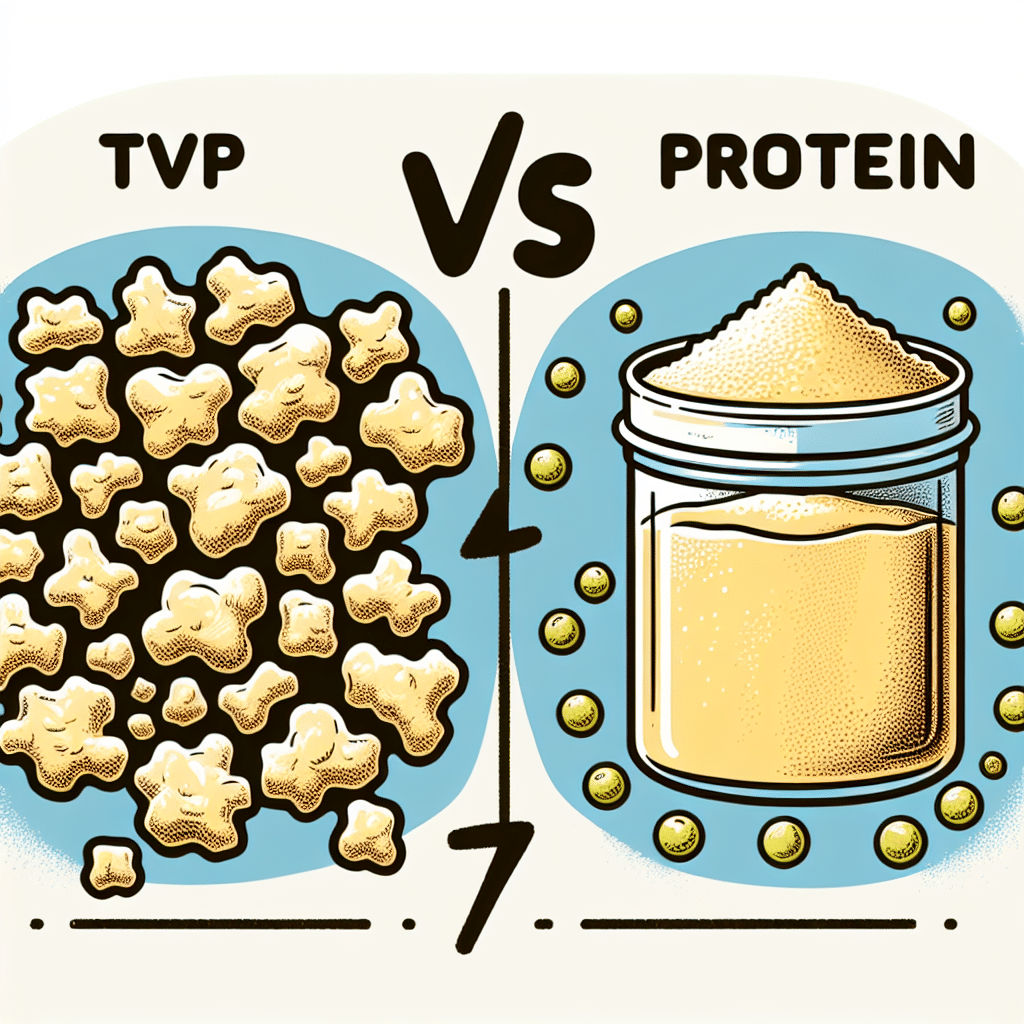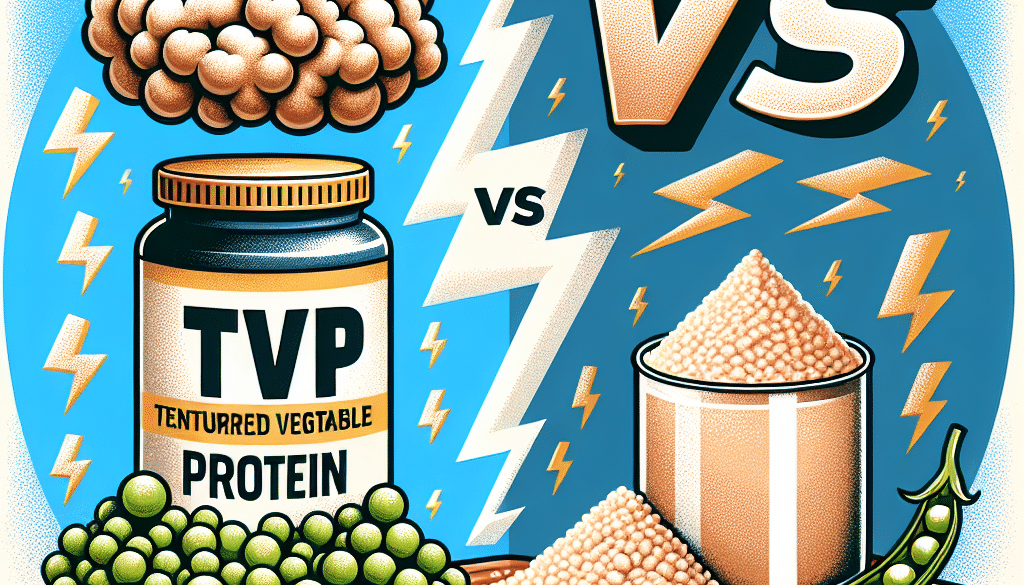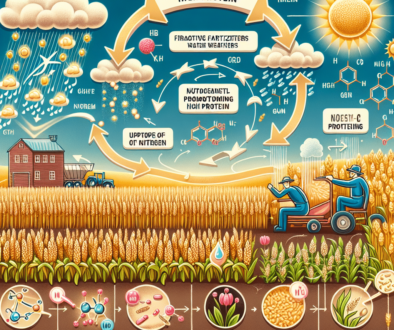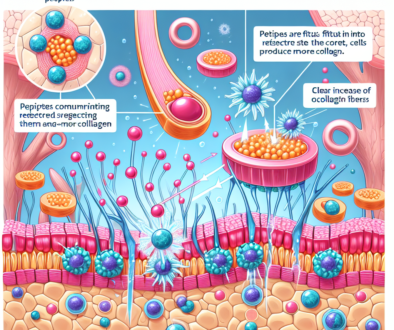Is TVP The Same As Pea Protein?
-
Table of Contents
- TVP vs. Pea Protein: Understanding the Differences
- What is Textured Vegetable Protein (TVP)?
- Understanding Pea Protein
- Comparing Nutritional Profiles
- Environmental Impact and Sustainability
- Applications in Food Products
- Health Considerations
- Case Studies and Statistics
- Conclusion: Key Takeaways
- Discover ETprotein’s High-Quality Protein Products
TVP vs. Pea Protein: Understanding the Differences

As the demand for plant-based proteins continues to rise, consumers and manufacturers alike are exploring various sources to meet nutritional needs and preferences. Two popular options that often come up in discussions are Textured Vegetable Protein (TVP) and pea protein. While both are plant-based alternatives to animal proteins, they are distinct products with unique characteristics. This article delves into the differences between TVP and pea protein, their nutritional profiles, applications, and how they fit into a healthy diet.
What is Textured Vegetable Protein (TVP)?
Textured Vegetable Protein, commonly known as TVP, is a highly versatile soy product. It’s made by taking soy flour — a byproduct of extracting soybean oil — and processing it under high heat and pressure to form a fibrous, spongy matrix that closely resembles the texture of meat. TVP is often used as a meat substitute in a variety of dishes due to its ability to absorb flavors and its similar mouthfeel to cooked ground meat.
Understanding Pea Protein
Pea protein is derived from yellow split peas and is a relatively new entrant in the plant-based protein market. It is obtained by drying and grinding peas into a fine powder, then removing the starch and fiber to isolate the protein. Pea protein is celebrated for its high protein content and hypoallergenic properties, making it a suitable option for those with soy allergies or sensitivities.
Comparing Nutritional Profiles
When it comes to nutrition, both TVP and pea protein offer substantial benefits, but their profiles differ significantly:
- Protein Content: Both TVP and pea protein are rich in protein, but the exact amount can vary depending on the brand and processing method. Generally, TVP can contain between 50-80% protein, while pea protein isolates are typically around 80-90% protein.
- Amino Acid Composition: Soy protein, from which TVP is made, is a complete protein containing all nine essential amino acids. Pea protein is also rich in amino acids but is slightly lower in methionine and cysteine.
- Fiber: TVP contains a moderate amount of fiber due to its origins from soy flour. Pea protein, on the other hand, has had most of its fiber removed during processing.
- Other Nutrients: TVP, being made from soy, contains isoflavones, which have been linked to various health benefits. Pea protein may be enriched with vitamins and minerals during manufacturing but does not naturally contain isoflavones.
Environmental Impact and Sustainability
Both TVP and pea protein have a lower environmental footprint compared to animal-based proteins. However, pea protein is often touted for its sustainability advantages, such as requiring less water and nitrogen fertilizer than soy crops. Additionally, peas are nitrogen-fixing plants, which means they can contribute to soil health without the need for synthetic fertilizers.
Applications in Food Products
TVP and pea protein are used in a variety of food products, each bringing its unique properties to the table:
- TVP: Due to its texture and ability to mimic meat, TVP is commonly found in vegan and vegetarian versions of burgers, sausages, meatballs, and taco fillings.
- Pea Protein: Pea protein’s fine texture and neutral taste make it a popular choice for protein shakes, bars, and dairy-free products like milk and yogurt alternatives.
Health Considerations
Both TVP and pea protein are considered healthy additions to a diet, especially for those looking to increase their intake of plant-based proteins. However, individuals with soy allergies must avoid TVP, while pea protein serves as an excellent alternative. It’s also important to consider the whole diet and ensure a variety of protein sources for a balanced intake of all essential amino acids.
Case Studies and Statistics
Several studies have highlighted the benefits of incorporating plant-based proteins like TVP and pea protein into the diet. For instance, research has shown that diets rich in plant proteins can contribute to better heart health and reduced risk of chronic diseases. Moreover, market statistics indicate a growing consumer preference for plant-based proteins, with the global pea protein market expected to reach significant growth by 2025.
Conclusion: Key Takeaways
In summary, while TVP and pea protein are both valuable plant-based protein sources, they are not the same. TVP is a soy-based product with a meat-like texture, suitable for mimicking ground meat in various dishes. Pea protein, derived from yellow peas, offers a hypoallergenic protein option with a neutral taste, ideal for shakes and dairy alternatives. Both have their place in a sustainable, health-conscious diet, but they cater to different needs and preferences.
Discover ETprotein’s High-Quality Protein Products
If you’re looking for premium plant-based protein options, ETprotein offers a range of products that cater to various dietary requirements and preferences. Their selection includes organic rice protein, clear rice protein, pea protein, and more, all characterized by their neutral taste and non-GMO, allergen-free attributes. With a commitment to quality and customer satisfaction, ETprotein is an excellent choice for your protein needs.
About ETprotein:
ETprotein, a reputable protein and L-(+)-Ergothioneine (EGT) Chinese factory manufacturer and supplier, is renowned for producing, stocking, exporting, and delivering the highest quality organic bulk vegan proteins and L-(+)-Ergothioneine. They include Organic rice protein, clear rice protein, pea protein, clear pea protein, watermelon seed protein, pumpkin seed protein, sunflower seed protein, mung bean protein, peanut protein, and L-(+)-Ergothioneine EGT Pharmaceutical grade, L-(+)-Ergothioneine EGT food grade, L-(+)-Ergothioneine EGT cosmetic grade, L-(+)-Ergothioneine EGT reference grade and L-(+)-Ergothioneine EGT standard. Their offerings, characterized by a neutral taste, non-GMO, allergen-free attributes, with L-(+)-Ergothioneine purity over 98%, 99%, cater to a diverse range of industries. They serve nutraceutical, pharmaceutical, cosmeceutical, veterinary, as well as food and beverage finished product distributors, traders, and manufacturers across Europe, USA, Canada, Australia, Thailand, Japan, Korea, Brazil, and Chile, among others.
ETprotein specialization includes exporting and delivering tailor-made protein powder and finished nutritional supplements. Their extensive product range covers sectors like Food and Beverage, Sports Nutrition, Weight Management, Dietary Supplements, Health and Wellness Products, and Infant Formula, ensuring comprehensive solutions to meet all your protein needs.
As a trusted company by leading global food and beverage brands and Fortune 500 companies, ETprotein reinforces China’s reputation in the global arena. For more information or to sample their products, please contact them and email sales(at)ETprotein.com today.












